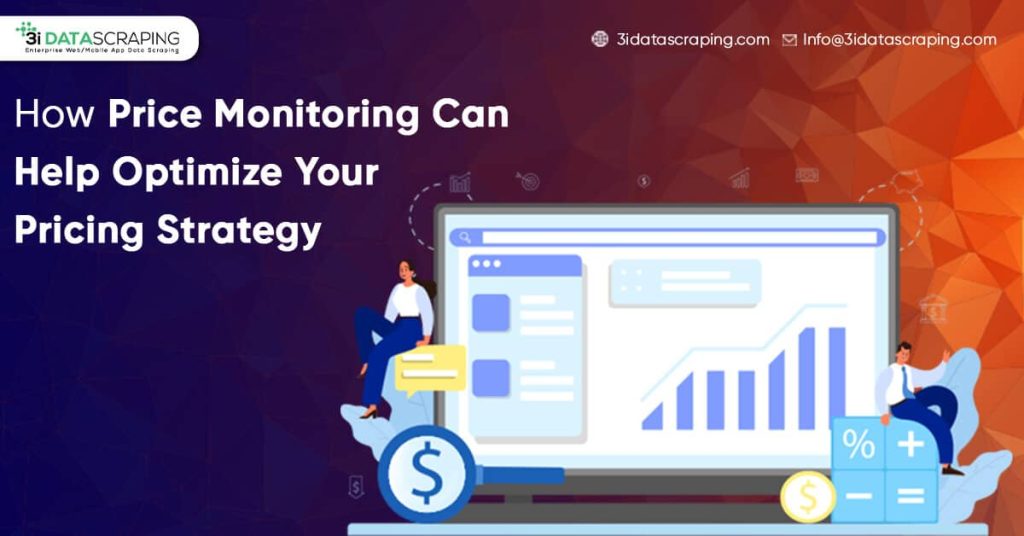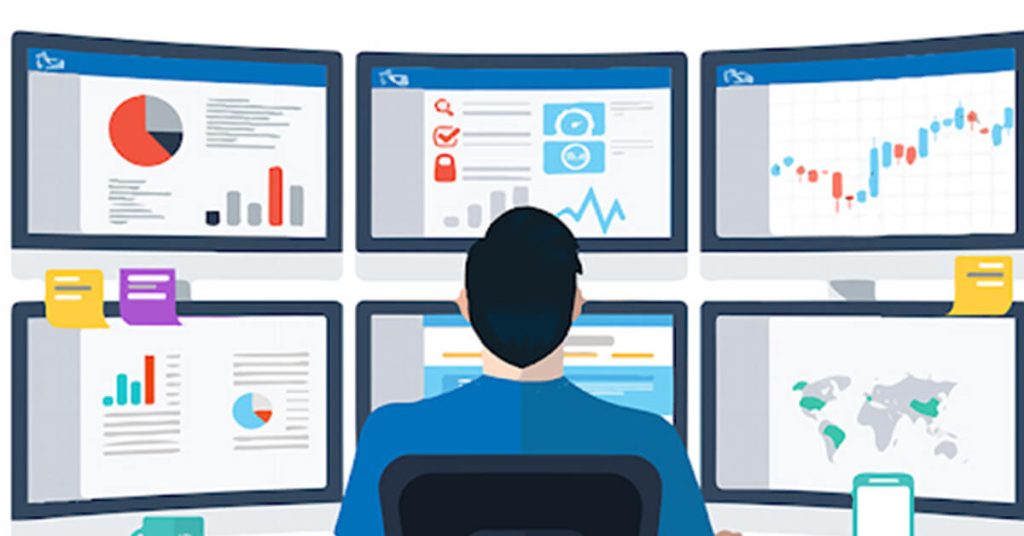How Price Monitoring Can Help Optimize Your Pricing Strategy
Careful monitoring of prices at the competitors’ level is the first thing to do. Read this article to learn how to optimize your pricing strategy using price monitoring systems.
- April 10, 2023
Our achievements in the field of business digital transformation.










Pricing is one of the most important decisions you can make as a business. It is one that you are constantly tweaking and adjusting as you grow, learn more about your customers, and respond to competitive pressures.
But what if there was a better way to set prices? What if you could use data to inform your pricing decisions? The good news is that you can. And it is easier than you might think.
In this article, we will look at how price monitoring can help optimize your pricing strategy.
What Is Price Monitoring?
Price Monitoring can be done manually or automatically. It is the process of tracking the prices of products and services to identify price changes. Manual price monitoring involves a person looking at the price of a product or service regularly, such as once per week. Automatic price monitoring involves software that monitors prices for you.
Price monitoring can be used for many different purposes, including:
- To help you determine whether it’s time to buy a product or service
- To help you make sure you’re getting the best deal possible
- To help you answer questions like “How much do TVs cost?”
Price monitoring helps in making informed decisions based on actual market conditions:
- It helps you understand how much your competitors charge for similar products/services. This information can ensure that your prices are at par with competitors or even lower than theirs.
- It enables you to identify price gaps in the market and take advantage of them. You can also identify price-sensitive customers and offer them discounts or incentives for buying from you. This will help in increasing sales volume and revenue generation for your business.
- It helps to know the right time to raise or lower prices and how much to raise or lower them.
- It helps understand consumer demand and, as a result, the right amount of inventory to keep on hand at any given time.
- It helps in knowing when you need to adjust prices for limited-time offers or promotions quickly.
The Benefits of Using Price Monitoring for Pricing Strategy

Pricing strategy is a crucial part of any business. It is how you set your prices and react to competitors’ prices. Price monitoring is one of the best ways to keep track of your competitor’s pricing.
Top price monitoring services can monitor price change, margins, and profitability. This provides you with critical insights into your competitors’ pricing strategies.
The following are the five significant benefits of using price monitoring services:
- It helps you adjust your pricing strategy in real-time.
- You can stay ahead of the competition by watching their pricing closely and adjusting your own accordingly.
- It gives you insight into new products on their way to market (and what they might cost).
- This could allow you to develop a new product first or even beat them to market with one that already exists in another country but has yet to be introduced in yours.
- It allows for better forecasting because it gives you better information about the demand for different products at different times during the year and how much inventory might need to be purchased ahead of time so that production is kept from getting backed up once orders start.
What Are the 5 Common Pricing Strategies?

1. Price Skimming
Price skimming is one of the most common pricing strategies in business. It involves a high price for a new product or service. The idea behind this strategy is to skim the profits from early adopters of the product, who are willing to pay more for it.
Price skimming works best when you can sell your product in small batches, which allows you to keep prices high.
The downside of this strategy is that it can take time to maintain. Eventually, competition will come with a lower price and better quality, thus lowering demand for your product.
2. Penetration Pricing
This strategy is used by businesses to get people in the door. It involves charging less than the competition to get new customers who will spend more money once introduced to the brand. This strategy can be risky because it requires consumers to try something new and hope they like it enough to keep coming back once they’ve tried it out once or twice.
Airbnb is one of the most successful companies that use penetration pricing. When they first started, they offered free listings for hosts and charged guests nothing for lodging.
3. Competitive Pricing
Competitive pricing refers to an organization’s pricing strategy when its products are similar in quality and features to those of its competitors. For example, if you’re a retailer selling shoes, you may price them competitively because they’re similar to other brands.
A competitive approach can be helpful if you want to maintain a specific image among consumers or if you want to avoid being perceived as overpriced or expensive. But it can also be risky because if your product isn’t priced competitively, you risk losing customers who may go elsewhere for cheaper options.
4. Value-Based Pricing
Value-based pricing is a popular method for setting prices for services and products. It involves determining what your customers want and how much they will pay, then pricing accordingly. This strategy works well when you know your target market and what they value most in a product or service.
For example, if you run an accounting firm and you know that clients who use your company’s services are looking for low fees but high quality, then you could charge less than other accounting firms (like those who offer more expensive packages) while still maintaining high standards of craft.
5. Dynamic Pricing
This pricing strategy means that the price of a product can change depending on time and demand.
Dynamic pricing encourages customers to buy products when they are needed most and decreases supply when it is not. Dynamic pricing, or surge pricing, uses algorithms to predict how much supply there will be and sets prices accordingly.
This pricing strategy can be found in many industries, including hotels and airlines, but it’s prevalent in retail stores.
For example, if you are shopping for a gift for someone and see that an item you want is on sale for $10 off its average price of $50, that might be because the store knows that people like you are more likely to buy something if it is discounted than if it is not.
Wrapping Up
Price monitoring is something that many e-commerce businesses would be wise to consider. It is not expensive, can give you a competitive advantage in the marketplace, and can provide you with invaluable information about when to change your pricing or add a new product.
If you want to make your business more competitive, keep your finger on the forces of supply and demand and better understand your competitors. Price monitoring is something you should consider.














What Will We Do Next?
- Our representative will contact you within 24 hours.
- We will collect all the necessary requirements from you.
- The team of analysts and developers will prepare estimation.
- We keep confidentiality with all our clients by signing NDA.




